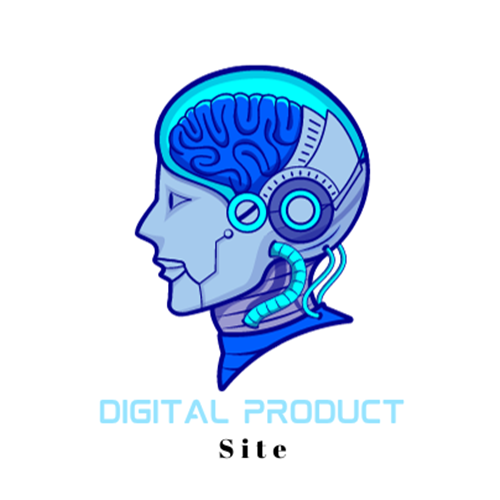Digital product development stands at the forefront of modern business strategies, driving innovation and meeting the ever-evolving needs of consumers.
In this article, we’ll explore the intricacies of digital product development, from its fundamental stages to the challenges faced by developers and the best practices that lead to success.
Introduction
A. Definition of Digital Product Development
Digital product development encompasses the creation, enhancement, and maintenance of software-based products that cater to diverse consumer needs. This can range from mobile applications and web platforms to complex software solutions.
B. Importance in the Modern Business Landscape
In today’s fast-paced digital era, businesses must continually adapt to stay relevant. Digital product development provides a competitive edge, allowing companies to offer innovative solutions and meet the dynamic expectations of their target audience.
Key Stages of Digital Product Development
A. Research and Ideation
The foundation of successful digital product development lies in thorough research and creative ideation. This phase involves market analysis, competitor evaluation, and the identification of consumer pain points.
B. Planning and Strategy
Developing a robust plan and strategy ensures that the project aligns with business goals. It involves outlining timelines, resource allocation, and defining key performance indicators (KPIs) for success.
C. Design and Prototyping
User experience is paramount. This stage focuses on creating intuitive and visually appealing designs, often involving prototyping to gather user feedback before full-scale development.
D. Development
The actual coding and development phase where the product takes shape. Agile methodologies are commonly employed to enhance flexibility and responsiveness to changing requirements.
E. Testing and Quality Assurance
Thorough testing is vital to identify and rectify bugs and glitches. Quality assurance ensures the product meets the highest standards before reaching the end-user.
F. Launch
The culmination of efforts, where the digital product is introduced to the market. A successful launch requires meticulous planning and execution.
G. Post-Launch Evaluation and Iteration
The journey doesn’t end at launch. Continuous evaluation and iteration based on user feedback and market trends ensure the product remains competitive and valuable.

Factors Influencing Successful Digital Product Development
A. Market Research
Understanding market trends and consumer behavior is crucial for creating products that resonate with the target audience.
B. User-Centric Approach
Putting the user at the center of the development process leads to products that genuinely meet their needs and expectations.
C. Agile Methodology
Agile practices enhance adaptability, allowing development teams to respond promptly to changing requirements and market dynamics.
D. Cross-Functional Collaboration
Effective communication and collaboration between diverse teams (development, design, marketing) contribute to holistic product development.
E. Technology Stack
Choosing the right technologies ensures the product remains scalable, secure, and aligned with industry standards.
Challenges in Digital Product Development
A. Rapid Technological Changes
The fast-paced nature of technology can pose challenges in keeping up with the latest advancements, impacting product development timelines.
B. Time and Budget Constraints
Balancing time-to-market with budget constraints requires strategic decision-making to avoid compromising on quality.
C. User Experience Challenges
Meeting user expectations for seamless, intuitive experiences is an ongoing challenge in digital product development.
D. Scalability Issues
Ensuring the product can scale with increasing user demand without sacrificing performance is a critical consideration.
Best Practices for Seamless Digital Product Development
A. Continuous Feedback Loops
Regular feedback from users and stakeholders ensures that the development process remains aligned with expectations.
B. Scalable Architecture
Building a scalable architecture sets the foundation for the product’s long-term success, accommodating growth without significant reengineering.
C. User Testing and Feedback
Incorporating user testing at various stages allows for real-time adjustments, resulting in a product that resonates with the target audience.
D. Agile Project Management
Adopting agile methodologies facilitates flexibility, responsiveness, and efficient project management.
E. Regular Updates and Maintenance
Post-launch, consistent updates and maintenance are vital to address issues, introduce new features, and adapt to changing market dynamics.

Case Studies: Successful Digital Product Development Stories
A. From Concept to Market Leader
Explore how Company A navigated the challenges of digital product development, turning a concept into a market-leading solution.
B. Overcoming Challenges and Achieving Success
Learn from the experiences of Company B as they overcame obstacles in their digital product development journey, emerging as a success story.
VII. Future Trends in Digital Product Development
A. Artificial Intelligence Integration
The integration of AI is set to transform digital products, enhancing personalization, automation, and overall user experience.
B. Blockchain Technology
Blockchain’s decentralized nature brings heightened security and transparency to digital product development.
C. Sustainability and Ethical Considerations
The future demands a focus on sustainable practices and ethical considerations in digital product development.
D. Personalization and Customization
Tailoring digital products to individual preferences will become a key trend, fostering deeper user engagement.
Conclusion
A. Recap of Key Points
Digital product development is a multifaceted journey encompassing research, planning, execution, and continuous improvement. Success hinges on factors like market understanding, user-centricity, and embracing technological advancements.
B. Importance of Adapting to Changing Technologies
Remaining adaptable to evolving technologies ensures that digital products stay ahead in a competitive landscape, meeting the evolving needs of users.
FAQs
Is digital product development only for tech companies? Digital product development is relevant across industries, not limited to tech companies. Any business aiming to stay competitive can benefit from it.
How long does the digital product development process usually take? The timeline varies based on the complexity of the project. However, a well-planned process can take several weeks to months.
What role does user feedback play in digital product development? User feedback is crucial for refining the product, ensuring it meets user expectations and addresses any pain points.
Can small businesses afford digital product development? Yes, digital product development can be tailored to fit the budget and scale of small businesses.
What are the key challenges in post-launch digital product maintenance? Post-launch challenges include addressing bugs, introducing updates, and adapting to evolving market trends.
Forex Forex Forex Forex Forex Forex Forex Forex Forex Forex Forex Forex Forex Forex Forex Forex Forex Forex Forex Forex Forex Trading Forex Trading Forex Trading Forex Trading Forex Trading Forex Trading Forex Trading Forex Trading Forex Trading Forex Trading Forex Trading Forex Trading Forex Trading Forex Trading Forex Trading Forex Trading Forex Trading Forex Trading Forex Trading Forex Trading Joebenz Joebenz Joebenz Joebenz Joebenz Joebenz Joebenz Joebenz Joebenz Joebenz Joebenz Joebenz Joebenz Joebenz Joebenz Joebenz Joebenz Joebenz Joebenz Joebenz Forex Indicator Forex Indicator Forex Indicator Forex Indicator Forex Indicator Forex Indicator Forex Indicator Forex Indicator Forex Indicator Forex Indicator Forex Indicator Forex Indicator Forex Indicator Forex Indicator Forex Indicator Forex Indicator Forex Indicator Forex Indicator Forex Indicator Forex Indicator Forex market Forex market Forex market Forex market Forex market Forex market Forex market Forex market Forex market Forex market Forex market Forex market Forex market Forex market Forex market Forex market Forex market Forex market Forex market Forex market




Leave a Reply